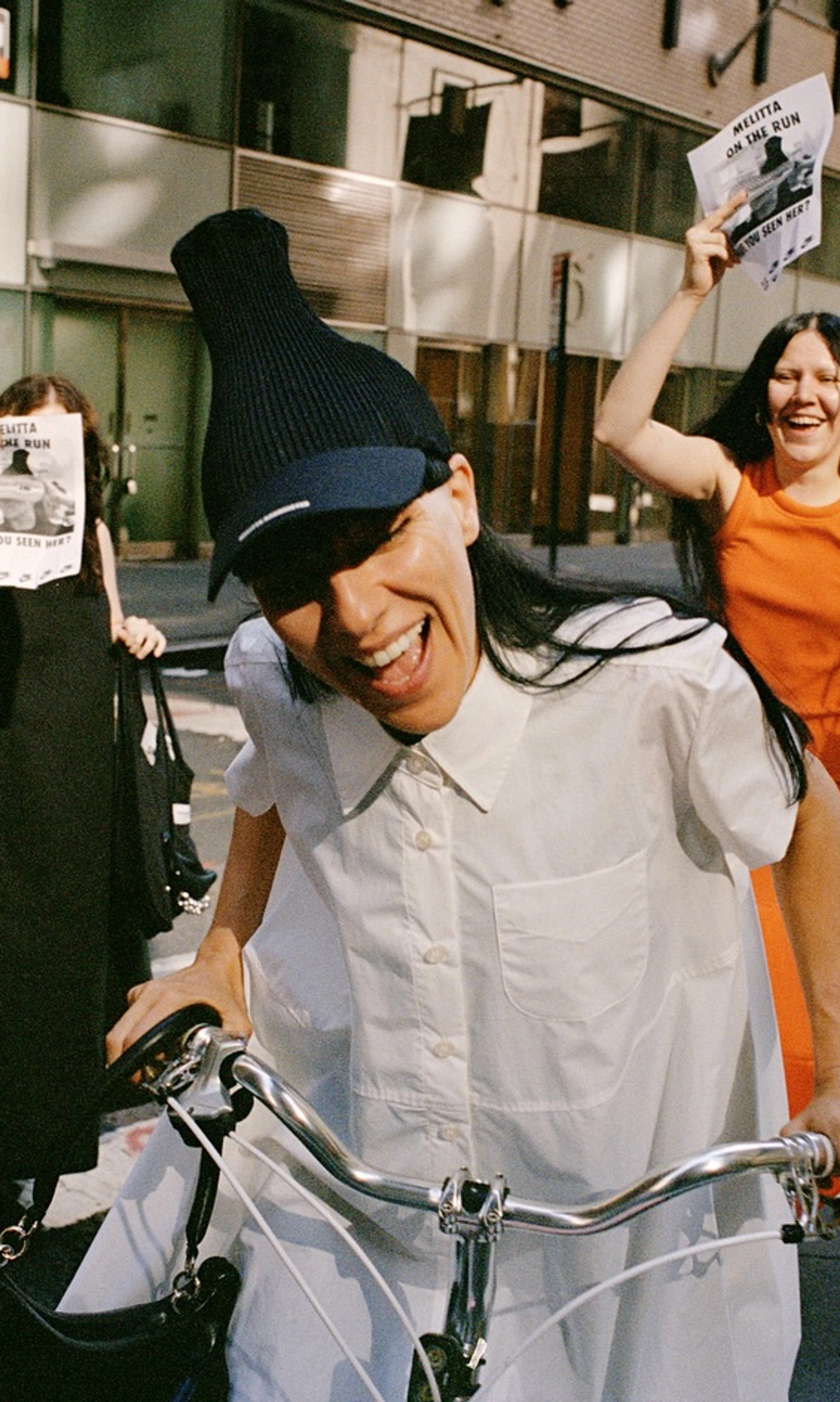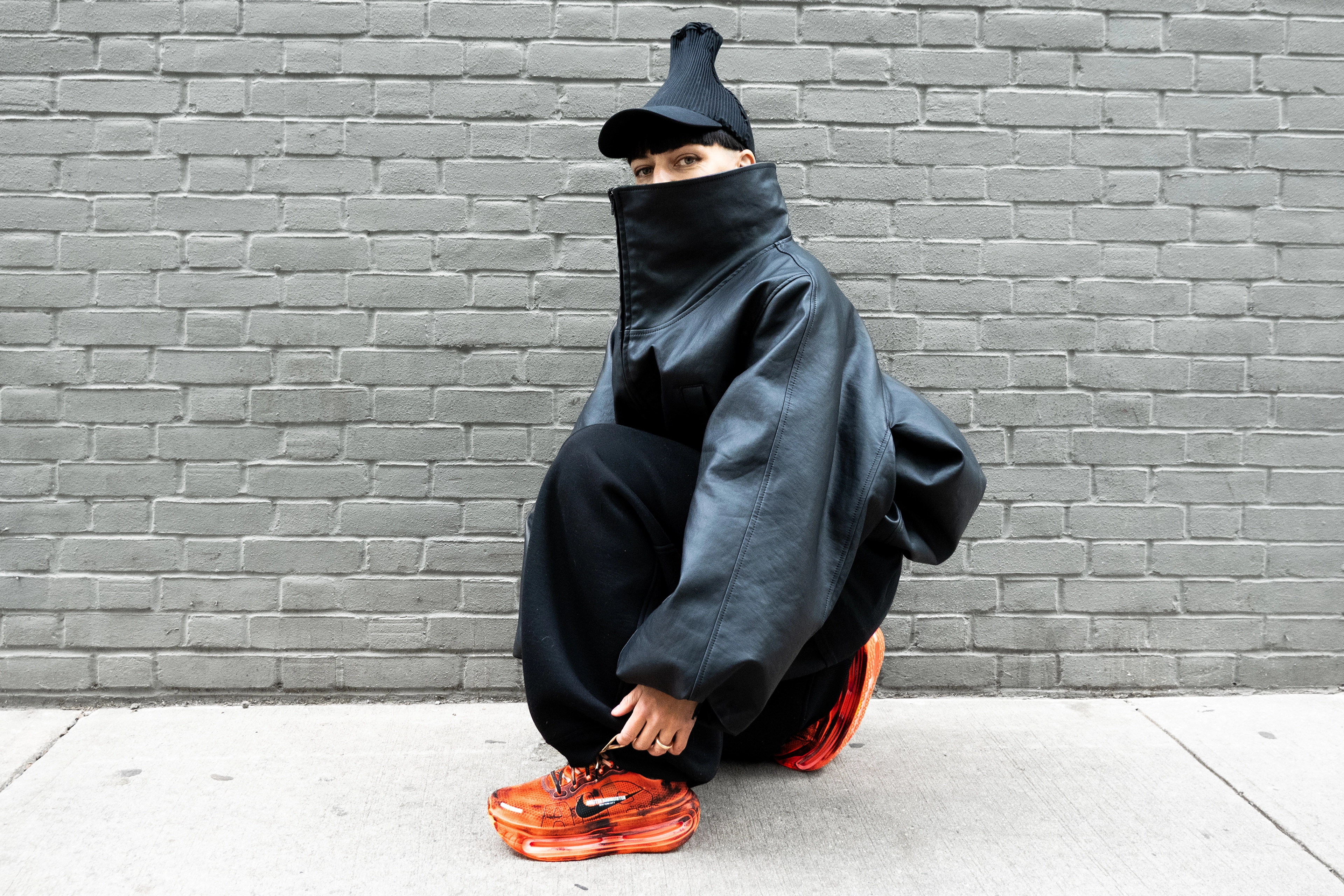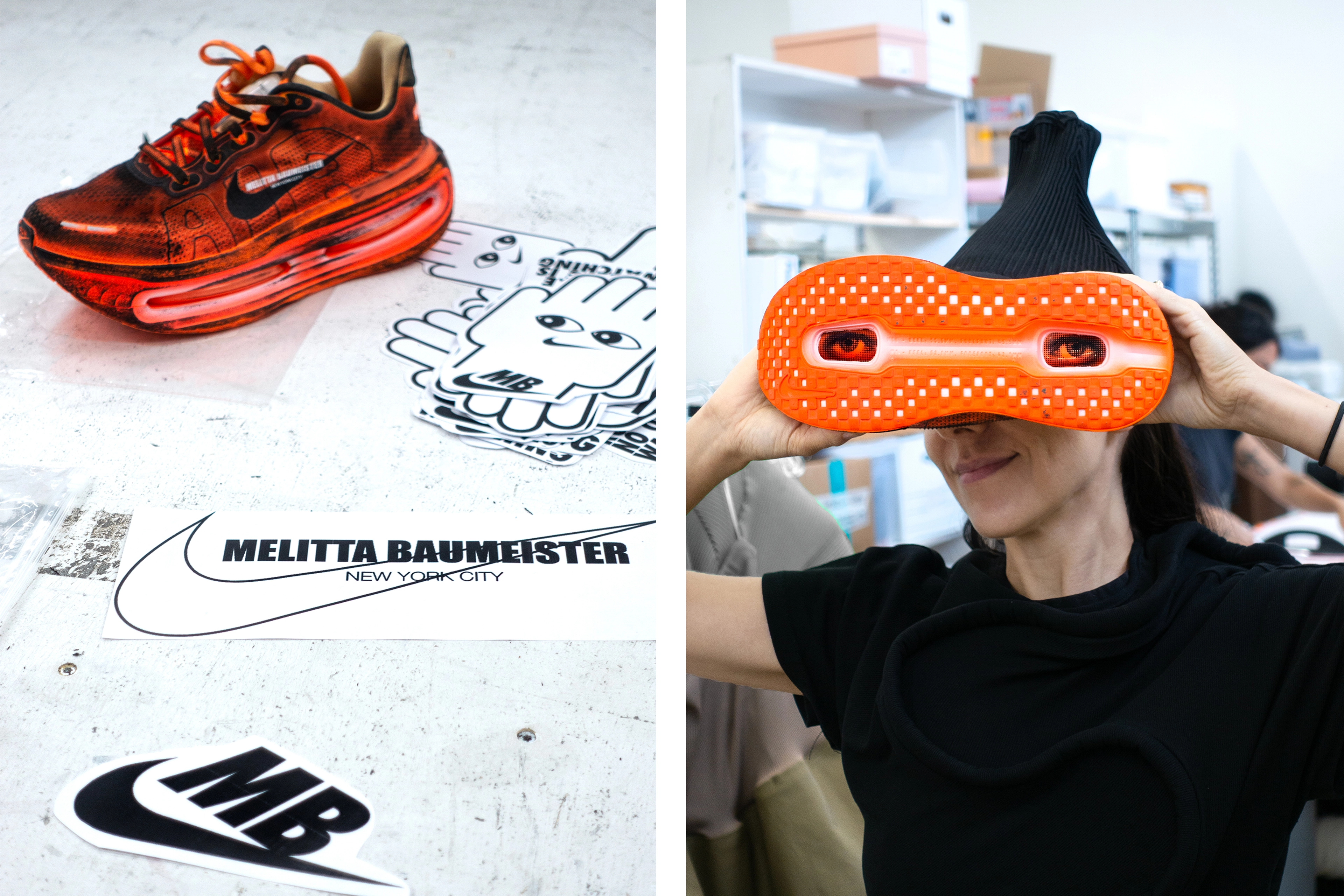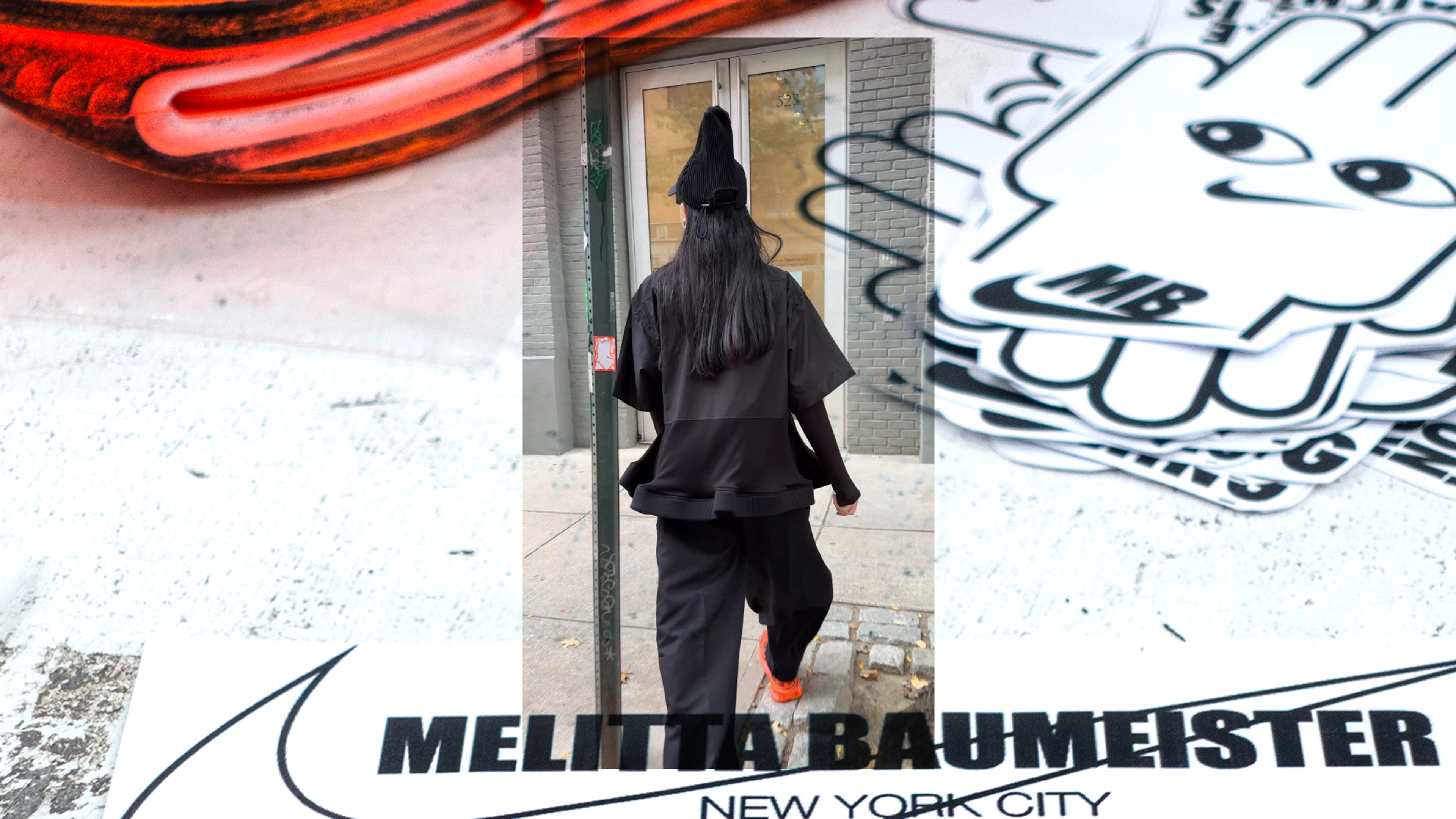5 Questions With Fashion Designer Melitta Baumeister


- October 29, 2025
Melitta Baumeister has built a reputation for turning the everyday into something extraordinary. Her work blurs the line between fashion and sculpture — exaggerated silhouettes, hand-shaped materials and unexpected textures that seem to hold movement inside them.
Since launching her namesake label in 2013, the New York–based fashion innovator has become one of the most distinct voices in contemporary design, earning recognition from the CFDA/Vogue Fashion Fund.
Now, she’s bringing that sculptural approach to Nike. On October 29, Baumeister will debut an experiential performance and installation in New York City, the first chapter in a long-term collaboration with the brand. Taking Nike’s Vomero Premium as her starting point, she reimagines the shoe’s color — and so much more, creating an expressive study of movement and perception. The result is part artwork, part experiment and fully human in its perspective.
For Melitta, the concept “Run Like No One” became the collaboration’s emotional core. It’s a message about rediscovering joy in motion; about moving for yourself, not for applause or perfection. Each sneaker in the series carries that same philosophy: subtle variations, layered color and evidence of the maker’s touch.
As she explains, the project isn’t about creating heroes, it’s about exploring honesty in motion, an idea that mirrors her own practice of experimentation and process. Here, Melitta shares how her Nike collaboration came together and why imperfection, realism and play may be the most powerful design tools of all.

“What I love about running is the way it changes your perception of time and space. It’s like exploring familiar surroundings in a new way. Places start connecting to thoughts, which then become memories, and the rhythm is in your body, not the stopwatch. Running is a powerful tool for creativity.”
Melitta Baumeister, fashion designer and Nike collaborator
How did you approach reinterpreting the Nike Vomero?
When Nike asked me to come up with a new colorway for the Vomero, my first reaction was: We need to find a different way to work with it other than simply exchanging one color for the other. The performance aspect of the Vomero was an additional inspiration. We needed movement and something unexpected — a shift away from the intimidating perfection of a pristine sneaker toward one that engages people on multiple levels in surprising ways.
My team and I have taken the idea of “built for movement” seriously, and instead of being stuck behind screens, we worked on it as we would on our sculptural dresses, using our hands and working directly with real materials. The outcome is a hand-painted sneaker, each one slightly different from the other. That’s what the audience will notice first when encountering the Vomero: the layers of graphics and storytelling that reveal themselves on closer inspection. I love this aspect of engagement from different distances and angles. It gives depth and more space for the audience to explore and experience it.

What first drew you to fashion as a form of expression?
For as far back as I can remember, I had a feeling that clothing can affect our lives and the way we feel. I was always drawn to people that used clothing not only to express their personality but also to help build that identity. This is where my love for fashion took root.
I knew from a young age that I wanted to make clothes for a living, probably around 14. I grew up in a small city where there wasn’t much fashion around. My mom introduced me to a fashion designer who was visiting, telling me that she was “changing lives by dressing people.” That stuck with me. Growing older, I understood what she meant. Changing someone’s identity or being part of someone’s identity was fascinating to me.
How did your own experience with running shape the concept for this performance?
Movement has always been essential in my daily and creative life, but finding the time and motivation while running a growing business has become a bigger challenge than running faster or farther. Knowing that this is the reality for most of my customers made it a good starting point for this collaboration in general and the performance in particular. What I love about running is the way it changes your perception of time and space. It’s like exploring familiar surroundings in a new way. Places start connecting to thoughts, which then become memories, and the rhythm is in your body, not the stopwatch. Running is a powerful tool for creativity.
From the very beginning, the performance gives a good insight into how we approach projects. Instead of arriving with a rigid idea that needs to be squeezed into any space, we visit different locations and look for their specific character, which we love to integrate into our concept. It’s like running on a treadmill versus through the city. I prefer the spontaneity and unpredictability to the preplanned and controlled. For our performance in New York, this meant utilizing all the “hidden” parts of the location that would usually be used only as storage or back of house. In fact, that’s how the performance starts, and how we enter the building. What follows is a succession of moments that meander between humorous surrealism and surprising realism.

You grew up in Germany and built your label in New York. Do those two places show up in your work today?
Definitely, especially when it comes to work ethic. I think growing up in Germany, there’s this constant drive to improve, to not settle, to always push something further. There’s a kind of built-in restlessness. Germans are often not easily satisfied, and I see that in how I approach my work. It’s always about questioning, refining, evolving.
What story or feeling did you want this performance to capture?
We wanted to create an experience that feels intimate and honest, stepping into the inner world of someone who doesn’t identify as a runner and watching that shift happen. It’s not about perfection or becoming a hero. It’s about the private, sometimes quiet journey toward movement.
I hope people feel something familiar when they walk through it. It’s about running for yourself, not for anyone else. That’s what “Run Like No One” means to us.